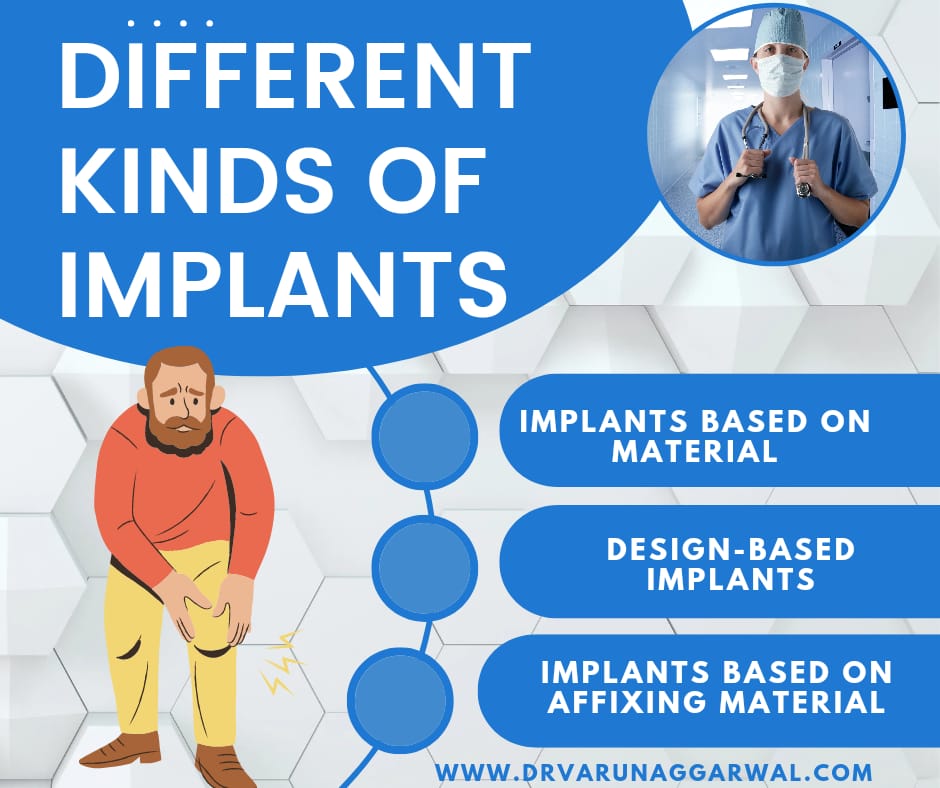Total knee replacement surgery includes the removal of damaged parts of the knee and replacing them with man-made artificial parts. These artificial man made components are also referred to as implants. There are several types of implants used for total knee replacement based on multiple factors such as,
- Activity level, weight, age, general health, knee problem, and knee anatomy
- The implant’s price and track record of success.
- Experience and familiarity of the doctor with the device.
Selecting the best knee implant can be very challenging. If you are feeling confused about which is the right knee implant for you, don’t worry. We are going to discuss the different types of implants in detail to help you choose the right one. But, before that, let’s see what exactly is replaced when a total Knee replacement is performed.
What is replaced in a total knee replacement surgery?
During total knee replacement, three parts of the knee are replaced with implants.

The femoral component
The femoral component is attached to the thigh bone. This is the largest component in terms of size and is curved in shape.
The tibial component
The top part of the shin bone is replaced by the tibial component. It has a groove. When the knee joint is bent and straightened, the groove on it enables the kneecap to move up and down.
The patellar component
The patellar is a dome-shaped component that replaces the kneecap and is not required in all cases.
The spacer
The spacer is inserted between the femoral and tibial components. The spacer gives the knee joint flexibility and helps in knee flexing and bending.
Let’s now see the different kinds of Implants to help you choose the right one

Implants based on material
Implants are commonly made from metal alloys, ceramics, or plastics.
Metal alloy Implants
Metal alloy implants are created using Metals such as Titanium or Cobalt-Chromium. These implants are strong and biocompatible. But, If you have metal allergies, you should not choose these implants. It is essential to tell your doctor about your allergies. Moreover, some skilled surgeons also use “gold knee implants”, which are absolutely safe for those having Metal allergies.
Ceramic implants
Ceramic implants give the knee joint a natural feel. Compared to metal joints, ceramic joints are less likely to wear and tear. However, if the knee is struck forcefully, there is a chance that the ceramic would break. If this occurs, emergency surgery will be needed to remove the ceramic parts that have broken.
Plastic Implants
Plastic implants can be a great choice for you if you are looking for the least expensive implants. They perform best when combined with metal components. However, these implants are prone to trigger an immune reaction which can result in the failure of the surgery.

Design-based implants
Fixed bearing Implants:
Implants with fixed bearings are used in the majority of knee replacements. They are less flexible and most suited for older persons who lead a rather inactive lifestyle. As the implants lack flexibility, too much movement can cause them to wear out.
Mobile bearing implants
Knee joint rotation is limited in this type of knee implant design. It has a groove that fixes the tibial component which helps it to bend. Young people and the elderly who are physically active should choose this kind of design.

Implants based on affixing material
Implants are attached to the knee using two different techniques that are as follows:
Cemented joint
In cemented joint technique, fast-drying cement is used to fix the implants to the knee bone. The surgery could fail if the cement breaks down, which is a possibility.
Non-cemented joint
When the surgery is performed using non-cemented joint technique, room is given for the natural bone to develop. The implant stays firmly in the bone. Young children with strong, fast-growing bones are ideal candidates to use it.

Click here to contact for more information


